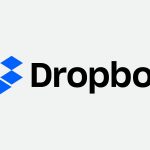Dropbox IPO: Maybe there’s an upside to being the “Netflix of online storage”
Quentin Clark, Dropbox’s senior VP of engineering, product, and design, has only been at the 11-year-old company since last August, so he’s careful not to hog credit for the work that led to its successful IPO today. But when I asked him for his fresh-set-of-eyes impression of how Dropbox got this far, he credited the fact that its historic instincts have been those of a consumer company rather than a maker of software for big businesses.
Dropbox, Clark says, focused on creating a user experience that made the people who use the service happy. It now has half a billion of those users, and among its 11 million paying customers, 90% used self-serve tools to sign up, rather than striking a deal through a salesperson. Aaron Levie, CEO of Dropbox rival Box, is fond of calling Dropbox the Netflix of online storage, a comparison that sounds superficially complimentary while also suggesting it isn’t a serious provider of enterprise-stength services.
But Clark emphasizes the upside of its approach. “We made a very intentional decision repeatedly to embrace the self-serve nature of the business and using the product as a way to encourage end-user adoption of the product and viral spread of the product,” he says. “When you look at our economics, we don’t have the same sales and marketing cost profile as some companies.”
A major part of Dropbox’s effort to make business users happy is Paper, its tool for collaborative document creation. Clark told me that it’s catching on: “We have this amazing permission from our user base and the market as a whole to evolve from that core file sync and sharing to content-based collaboration and teamwork … People who are heavy Dropbox users are embracing Paper at a very high rate, and it’s incredibly transformational for them.”
(38)












